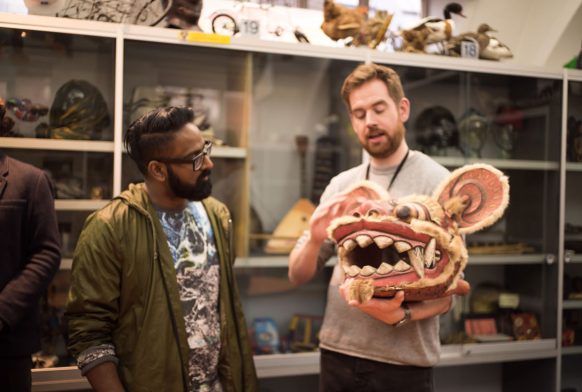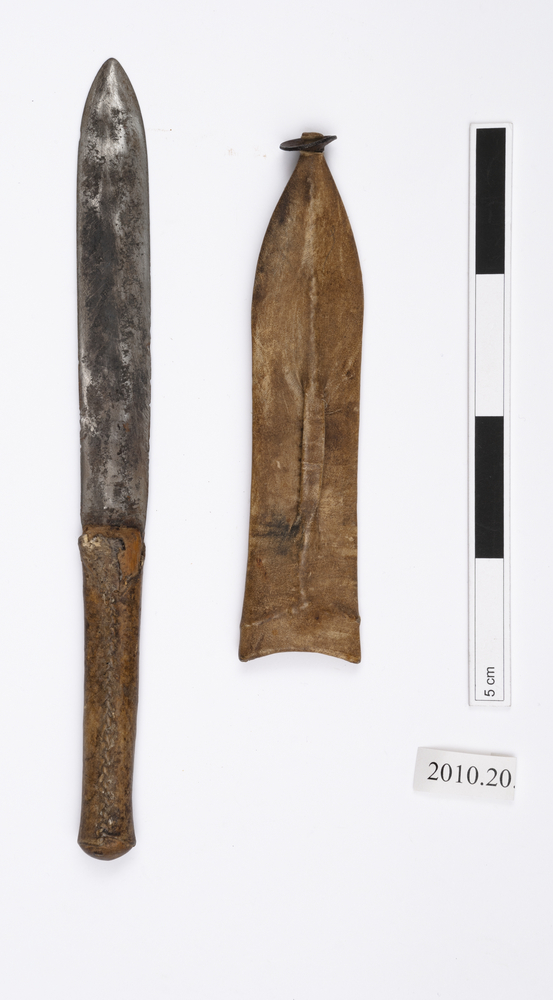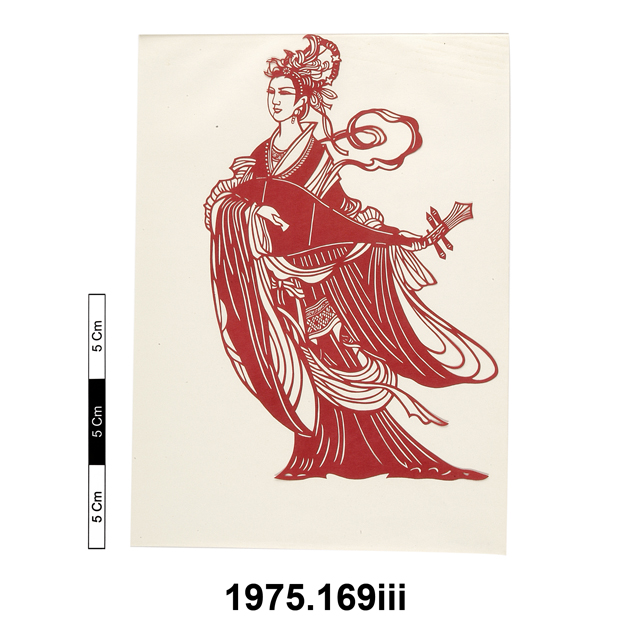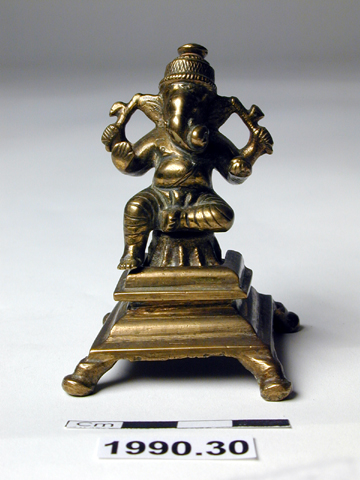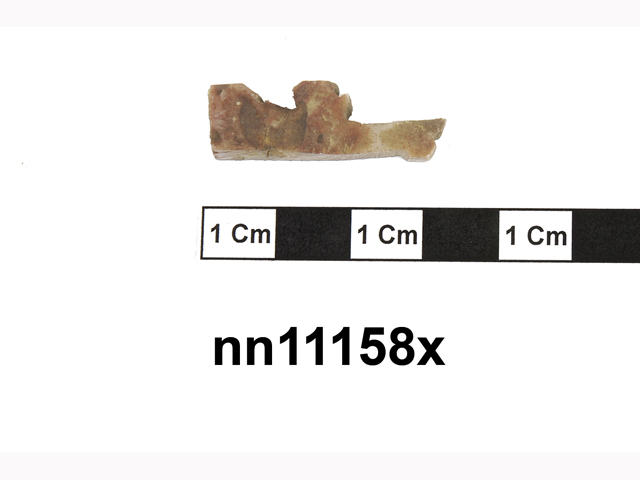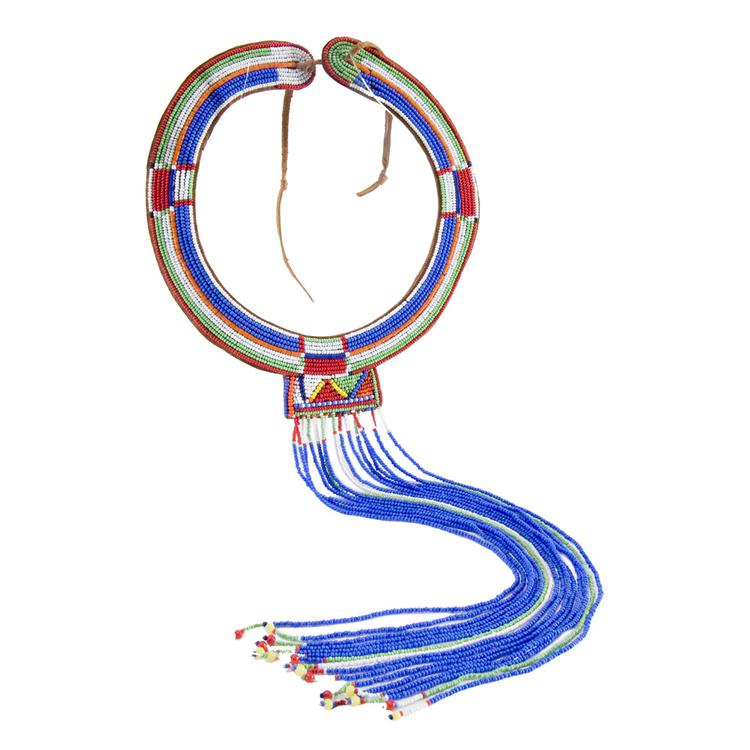
Maasai neck ring, 'meringet' made from leather decorated with blue, red, green and orange beads, with a long multicoloured beaded front piece.
Community Commentary by Emodo Janet Idekure within research project: 'Rethinking Relationships and Building Trust around African Collections' 2021 A necklace made of leather at the neck areas and beads at the lower parts The object was used and Currently still used in wedding ceremonies of the Maasai people . There were a number of different colours used in Maasai beadwork ,red signified blood,bravery,and unity,white represented health peace and purity,blue represented sky and energy whereas green represented the grass colour and signified land production. A woman getting married wore a long necklace with blue beads and a very elaborate and heavily neck piece. Those with higher social status wore more colourful beads. It was made by the mother of the bride ,the bridegroom's mother or aunties had to pay the bride's mother a bull so that they could make the necklace for the ceremony. It was also worn by the single ladies when they were going for the dances for the purpose of enhancing their beauty. Colours and it's significance: Beaded ornaments represented Maasai's cultural values and traditions. Bead was worn according to the age and social status of an individual. The museum can retain the object as world's cultural collection for researchers and for tourism purposes. This is because the object is not extinct in the community ,it's still been made but modified in a modern way.



